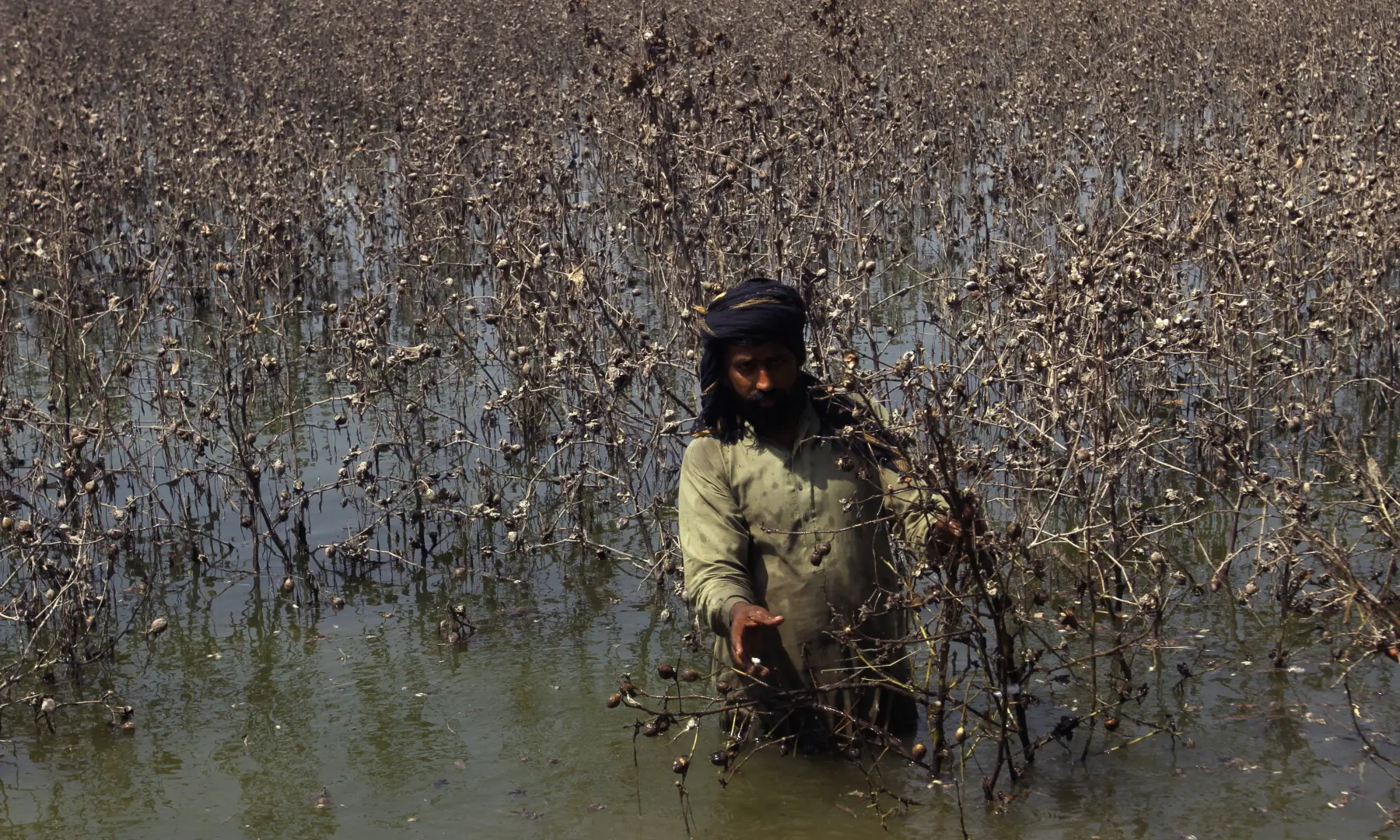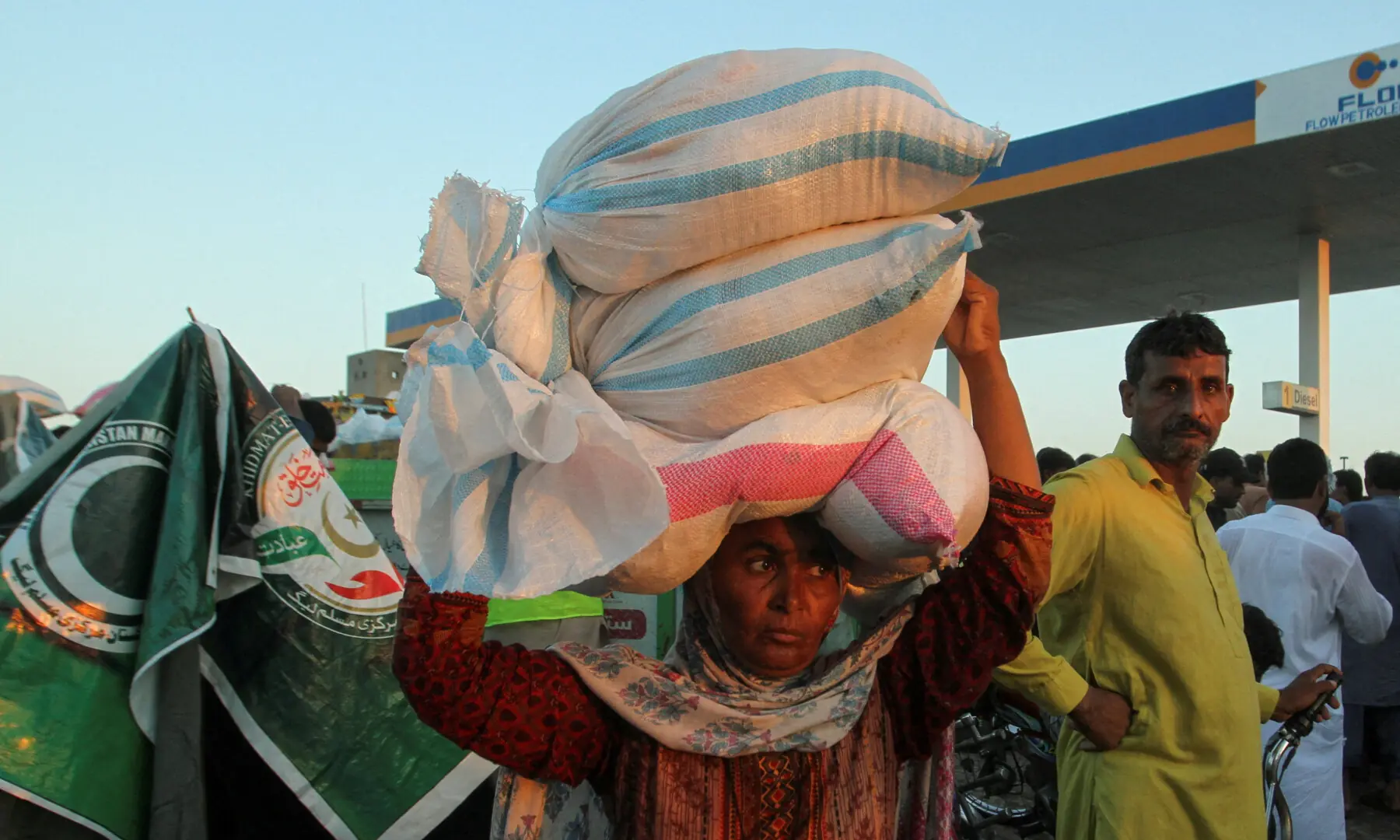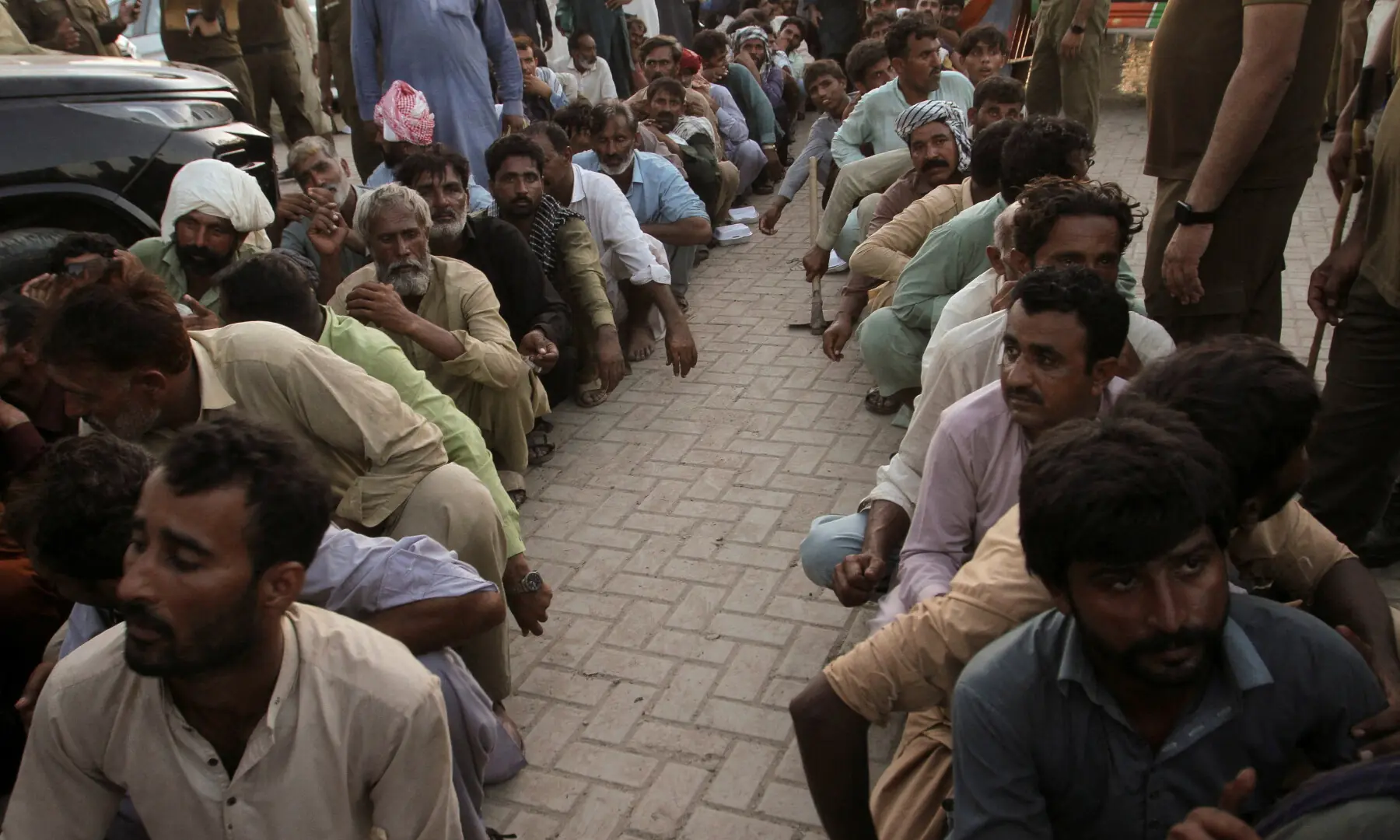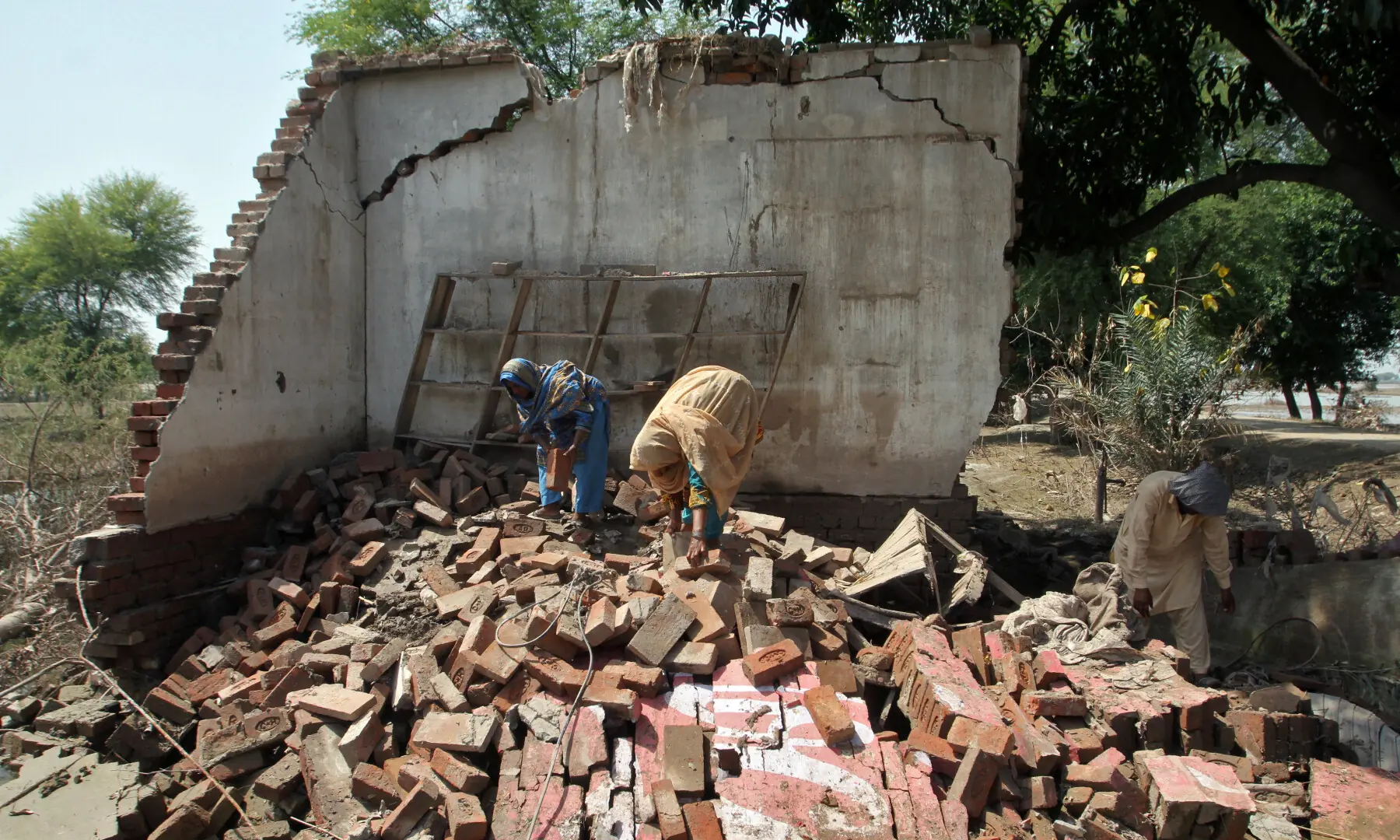The recent floods across Punjab have upended lives once again, displacing nearly 2.8 million people and affecting more than 4.2m, according to a Rapid Needs Assessment report from the United Nations. Amid the devastation, survivors are struggling not only with loss and uncertainty but with deep psychological distress that shows no sign of easing.
A mother’s silent struggle
Nazeera Bano, 39, a mother of four from Bait Nabi Shah village in Muzaffargarh’s Tehsil Alipur, has been having sleepless nights since this year’s floodwaters swallowed her home and forced her family to seek shelter in a government-donated tent. Now living with relatives in a nearby village, she says the flashbacks of the ordeal still play out vividly in her mind, leaving her anxious and on edge.
“My daughter is getting married next year, so we had all the dowry kept in the house. When the water entered, we barely had time to save anything. We brought the jewellery with us and some essential items, but not everything could be carried. I am now extremely worried. We are poor. How will we arrange for this again?” she said.

“I get flashbacks of what my house looked like before and what it looks like now. I get nightmares of drowning along with my family. We have been told that we’ll head back home soon, but I am not sure how to forget about it.”
Displacement, she says, has been far from easy. For years, her biggest concern had been getting her daughter married. Every penny went into saving for her dowry, much of which was lost to the floods. Her husband now fears they might have to sell the daughter’s jewellery just to get by. The thought, Bano adds, has left both her and her 19-year-old daughter deeply anxious. Even though her daughter’s in-laws endured the same ordeal, she worries they may not understand the family’s financial loss.
“They are still expecting so much. How can I sleep at night in such circumstances?” she lamented.
Bano’s ordeal shows the quiet anguish of countless families uprooted by the floods. While their homes and livelihoods may one day be rebuilt, the emotional toll is harder to recover from. Yet in most relief efforts, mental health remains an afterthought. When some survivors were asked about their jazbaat — their feelings — many did not even understand what they were being asked.

The weight of trauma
This year’s World Mental Health Day theme, “mental health in humanitarian emergencies,” strikes a chord in Pakistan, where floods have left millions vulnerable. The World Health Organisation estimates that one in five people in such crises develops a mental health condition, yet psychological support remains scarce.
Dr Fauziah Rabbani, Professor of Public Health and Implementation Scientist at the Brain & Mind Institute, Aga Khan University, and Amna Siddiqui, Consultant at the Brain & Mind Institute, told Dawn.com that floods contribute significantly to Post-Traumatic Stress Disorder (PTSD) risk because exposure is often both severe and prolonged.
PTSD is a mental health condition triggered by experiencing or witnessing a terrifying event, often causing flashbacks, nightmares, and severe anxiety.
“A recent analysis found PTSD prevalence in flood victims to be about 30 per cent as survivors witness injury or death, lose their homes and belongings, and experience repeated aftershocks of fear during ongoing rains or displacement, which can overwhelm coping mechanisms,” they said.
They explained that many survivors experience repeated losses, such as homes, livelihoods, and livestock, which mirror known risk factors linked to elevated PTSD rates.
Displaced individuals often display symptoms including anxiety, depression, sleep disturbances, nightmares, and intrusive thoughts or flashbacks. Physical symptoms such as fatigue, headaches, and rapid heart rate are also common.
Citing the mPareshan study, conducted by the Brain & Mind Institute following the 2022 floods in Sindh’s Badin district, they said: “Approximately 23 per cent of adults had mild to moderate anxiety and 24 per cent had mild to moderate depression, indicating a large burden of psychological symptoms as assessed through standardised psychometric tools.”
Maha Iftikhar, a Clinical Assessment Specialist at the Lahore University of Management Sciences (Lums), observed visible trauma in shelters. “Even when people appear to be coping, there are physical manifestations of stress in the form of appetite loss, difficulty sleeping, and constant worry,” she told Dawn.com. Children often show fear through clinginess or outbursts, while adults display fatigue or irritability.
The pain of losing more than homes
Journalist Akhtar Soomro, who travelled throughout Punjab to report on the floods, described the profound impact of the disaster on families, saying that while people were sad about losing their crops and machinery, they were most affected by losing their animals.
“Families have a bond with their cattle: they name them, treat them like family members, and love them very much. Because of this, people were even more saddened by losing their animals,” Soomro told Dawn.com.

In Kasur and along the Sutlej River, some families refused to evacuate, staying in homes surrounded by water to protect their livestock. Even during Rescue 11 operations, villagers resisted, saying, “We do not want to go. We will stay here. No matter what the water level is, we will go to the roofs.”
Soomro also noted the hidden toll on men. “Male members of a family often don’t cry openly, and it is very hard for them. Seeing their house empty and belongings scattered after a disaster is extremely painful. Even prosperous families are mentally affected despite having resources,” he observed.
The physical echoes of trauma
The stress of displacement manifests in the body as much as the mind. Dr Monica Vaswani, Psychiatrist and Assistant Professor at Karachi’s Asghar Psychiatric Hospital, explained, “People are not just emotionally shaken; their bodies also carry the trauma. We see patients with somatic complaints directly linked to the stress of displacement and loss.”
Bushra Jabeen, Clinical Psychologist at Ittefaq Hospital Lahore, added that prolonged exposure to disaster conditions erodes coping mechanisms, especially for women and children. “Even when people appear to manage externally, internally the stress is accumulating and affecting their health,” she said.
Both professionals stressed the importance of recognising trauma holistically, acknowledging that the psychological impact of disasters extends beyond the mind and can manifest physically, requiring integrated support for both mental and physical health.
The endless strain of displacement
For Saeed, who hails from Baharewali in Mauza Azmatpur, the floods stole everything. “The government cannot compensate for the loss we have incurred. First of all, we did not get any help,” he told Dawn.com.
He paid to save his family and animals, only to return to a village in ruins. “All our property has been lost,” he said.
Each day brings new worries, including how to rebuild, where to find food, and how to keep his children safe. “I keep thinking about this. There is nothing else on my mind.”

Dr Ehsen Naveed Irfan, a psychiatrist in Mansehra, stressed that prolonged displacement deepens mental health struggles. “People need to be rehabilitated to proper residential facilities close to their original homes. Without this, their mental health struggles intensify, and returning to normal life becomes extremely difficult,” he said. His team, he said, trained local doctors and used psychological first aid, screening communities for PTSD and offering therapies like Eye Movement Desensitisation and Reprocessing (EMDR).
Building bridges to recovery
Psychosocial support is vital for healing in the face of disaster. According to Bushra, “Psychologists and mental health professionals can help disaster survivors process their trauma experiences, strengthening social support, providing problem-solving and resilience training. Priority should be given to fulfilling their basic needs, while specialised therapies may be beneficial after initial support.”
At the same time, she noted, local mental health systems are not well-prepared to handle emergencies, leaving many communities without timely support.
Citing evidence, Dr Rabbani added that early interventions, particularly by trained frontline workers, can significantly reduce PTSD and depression. In Sindh, Lady Health Workers trained in psychosocial support and equipped with digital counselling tools helped communities cope, leading to measurable reductions in anxiety and depression. “Community-based approaches, peer support, and culturally sensitive interventions are key to sustaining recovery,” she emphasised.
A fragile path forward
Nazeera talks about her sleepless nights and constant headaches, but she clings to hope. “My only hope is that we go home safely and get our daughter married. As for my other family members, we will endure it. After all, who can fight nature?”
Her words carry the quiet strength of families across Punjab, piecing together lives torn apart by floods. On World Mental Health Day, their story is a raw reminder: mending broken spirits is as crucial as rebuilding homes, a slow but stubborn journey toward hope, one day at a time.
Header image: A boy stands while other wades through flooded area near a road leading to their homes, following monsoon rains and rising water levels of Indus River on the outskirts of Dadu, Sindh province, Pakistan September 15, 2025. — Reuters
from Dawn - Home https://ift.tt/sIQw1JC
Comments
Post a Comment